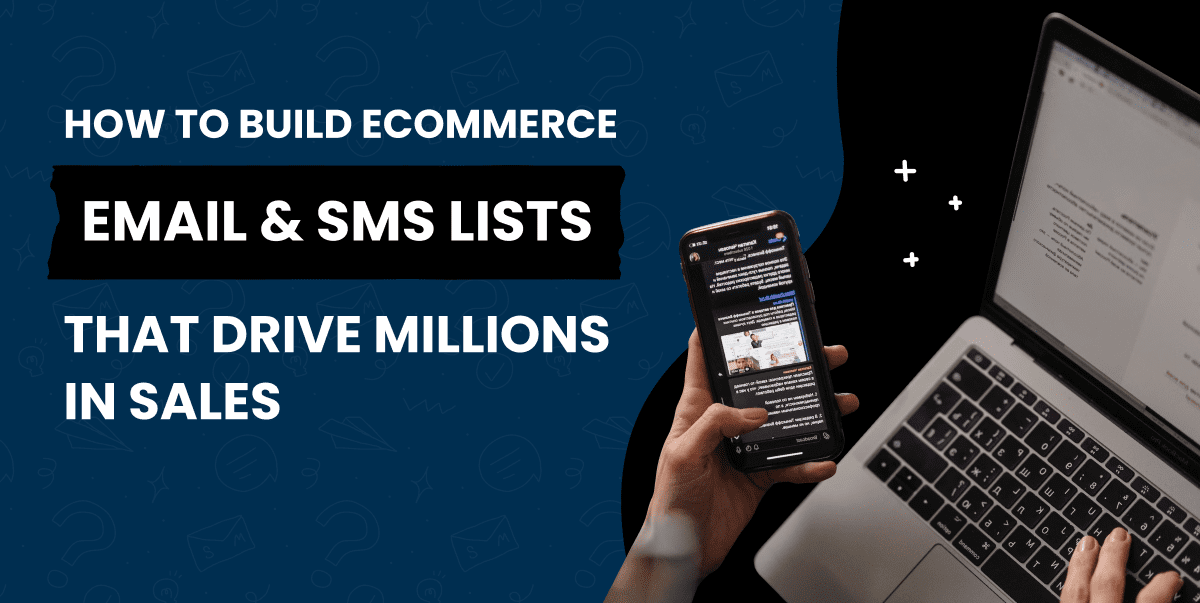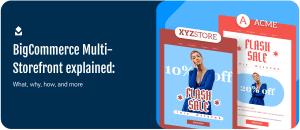Email and SMS provide merchants with an ability no other marketing channel can offer: reaching your customers with direct and personalized messages – That is of course if you know how to build an email list.
By reaching them directly in their inbox, email has the highest ROI of any digital marketing channel (averaging $40 for every $1 spent). And while landing in the inbox is great, it doesn’t beat SMS’ phenomenal 98% read rate (with 60% of customers reading an SMS campaign within 5 minutes).
So it’s fair to say email and SMS are pretty important. That said, behind every great email or SMS marketing strategy lies one essential element: a powerful list of subscribers.
It’s no exaggeration to say that your list and how you build it can literally make or break your campaigns. And by extension, your business.
The highest-converting lists are built with active, purchase-ready subscribers ready to engage with your campaigns. This is the closest you’re to get to having a licence to print money. Frustratingly for most merchants, their lists are far from this ideal.
That’s why we’ve put together this guide on how to build an email list that can drive millions in sales.
Steps to building high-converting lists
1) Focus on quality over quantity
It’s tempting to focus on building your list as quickly and as large as you can. But you need to be selective of who’s signing up and qualitatively determine the filters that will be installed if you use tools such as sales navigator for lead generation.
That’s not to say that quantity isn’t important. All else being equal, a list with a million subscribers is going to drive more sales than a list with only a few hundred.
But in their rush to build a list, too many merchants just slap together a basic popup overnight with an uninspired offer such as “10% off your first purchase” and try to pass it off as a lead magnet.
Sure, this will get people to sign up, but it’s a safe bet a lot of them won’t qualify as leads.
Instead, you should think about who you want on your list. Who do you want to be communicating with? Freebie-seekers? Or people who are your actual target customers and have the potential to become loyal, repeat purchasers?
In other words, you want people who show purchase intent. Not only will it make your list more profitable, but your sender’s reputation will also remain intact thanks to a clean list.
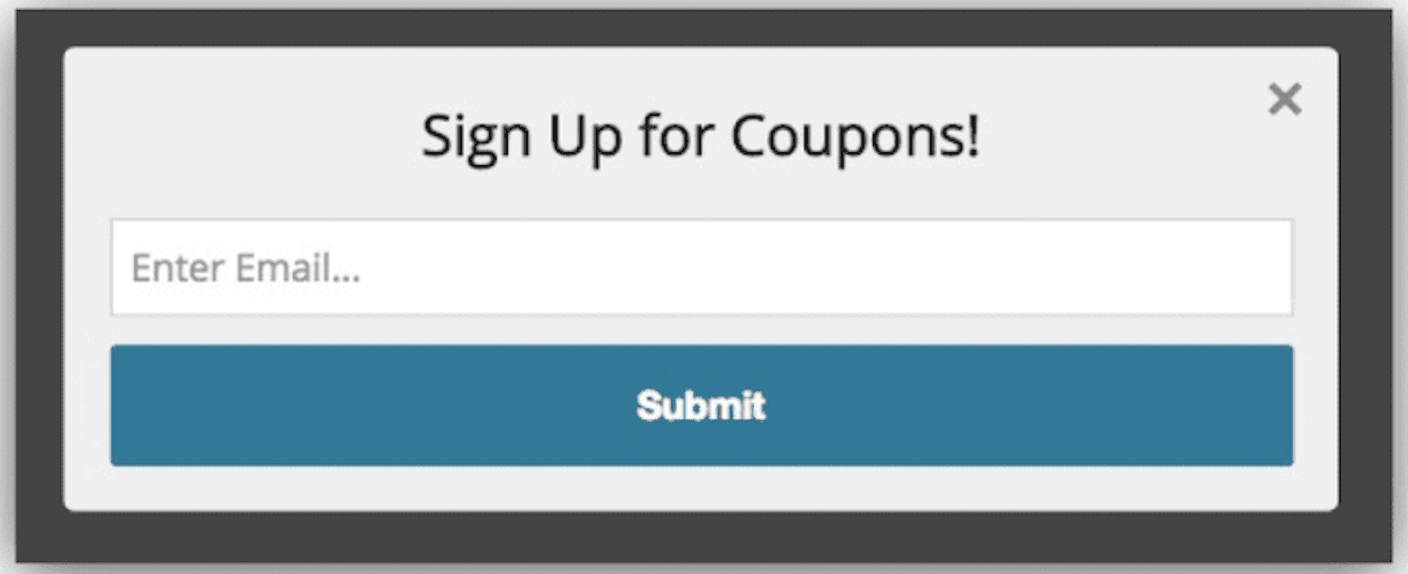

Which popup do you think will result in a higher-quality list?
Your existing customers are those with the highest purchase intent, as they’ve already converted. That’s why it’s essential you give people the option to subscribe during check out.
Obviously you don’t want to limit yourself to just existing customers, that’s why the next step is all about where you get people to sign up.
2) Think about where to find subscribers
The best way to build a quality list is to think about where and how people are signing up.
We’ve already mentioned that the best subscribers are your existing customers, but the aim of your list is to scale your sales. This means growing your customer base by growing your list.
There are two ways you can achieve this: organically, or through paid campaigns.
Organic is nearly always better so it should be your main focus.
Ways you can grow your list organically include making the most of your online store’s traffic and your social following. This is because the act of visiting your store or following your brand on social media is in itself a purchase intent signal. These are people interested in what you’re selling. Ideally, they’ll have visited more than just your homepage or a random blog article, but we’ll touch on that in the next section.
Essentially paying for subscribers through paid activities such as social media campaigns is okay, but it’s definitely the lesser of the two options.
While not perfect (the value proposition should take prominence above the ‘swipe up to join mailing list’ call-to-action), Bail Body does this reasonably well in the example below.

Whatever you do though, do not go purchasing lists. Only sending campaigns to those who have opted in is essential, unless you want to destroy your sending reputation and end up in the spam folder.
3) How to build an email list 101: Offer them something in return
Now that you have an idea of who you want on your list and how and where to find them, it’s time to think about the what. That’s what you offer them.
People are not going to hand over their email address or phone number for nothing in return.
And what you decide to offer is going to impact both your conversion rate and the type of people signing up. Remember, you want to focus on quality over quantity. People who display purchase intent over freebie-seekers.
So what should you offer?
This is a classic case of it depends. It depends on whether they’re existing or potential customers and it depends on what stage of the purchase journey they’re at. But in general, here’s what we’ve found results in the highest quality lists:
Tools and resources
This is anything you could consider educational. Think buyer guides, recipes, cheatsheets, even a collection of the latest trends in your industry as a source of inspiration.
These resources are particularly enticing to potential customers early on in their purchase journey (in other words, at the top of the funnel) as they’re likely still trying to understand your products and which is best for them.
That’s what makes the popup from Tile Mountain below effective: tiling is something you want to get right the first time, but unless you’re a professional tiler, you’re going to need a bit of help.

Ideally, whatever tool or resource you offer, it will encourage your new subscribers to use your products. You can bet Tile Mountain recommends plenty of its own products in its tiling checklist.
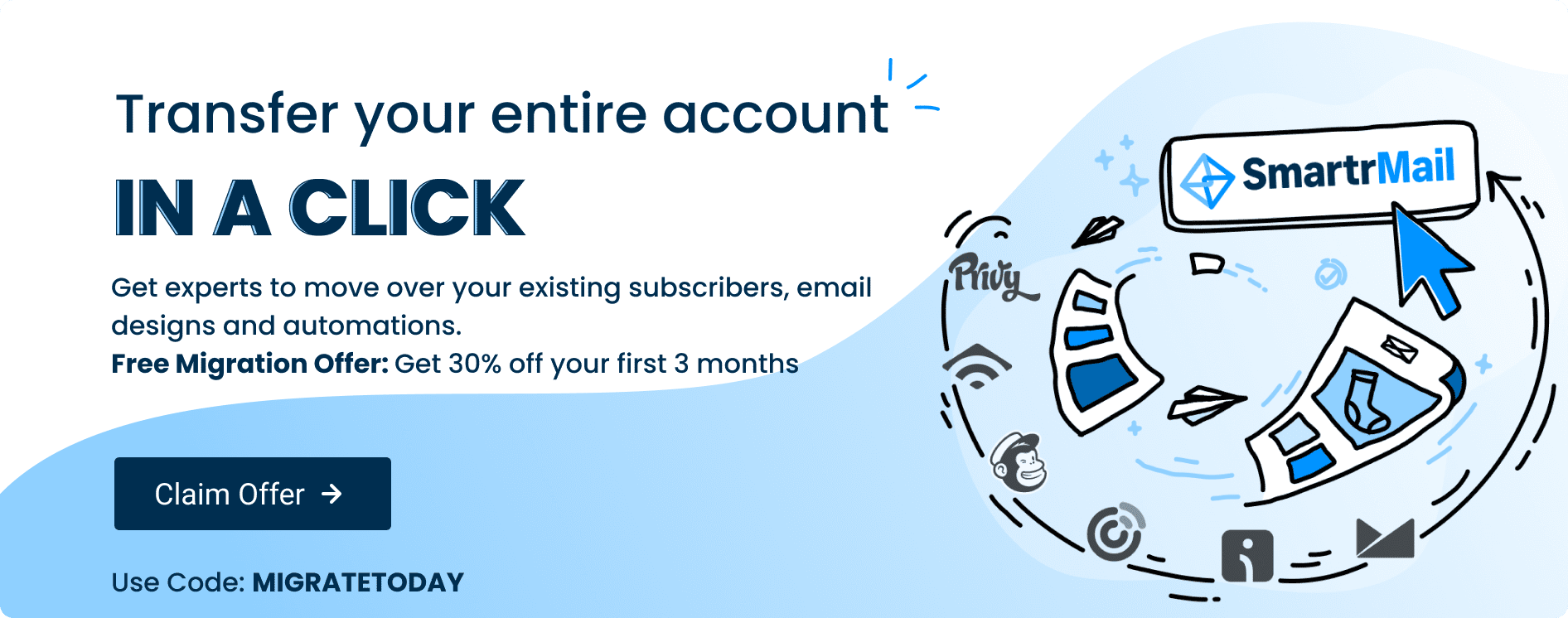
Quizzes
Quizzes are questionnaires visitors answer to get a specific result. They don’t work for every store, but for those they do, they tend to result in some of the highest intent, most profitable lists you’ll build.
Quizzes work best when customers genuinely need recommendations to make the best purchase possible. Such as finding the right combination of supplements, personalized skincare routine, or what haircare product to buy like in the example below from Curlsmith.

Deals
This is your quintessential ecommerce lead magnet. Think “free shipping” or “buy one, get one free” (BOGO).
Yes, everyone does them, but there’s a reason for that: they’ll be the highest-converting lead magnet you’ll have.
The trick to making sure you capture high-intent potential customers instead of freebie-seekers is where you make the offer.
Don’t have it pop up on your homepage immediately when someone first visits. Include them on your product pages. Have them appear after your visitor has been on the page for a certain amount of time or has scrolled down most of the page.
4) Matching your messaging to your audience
Copywriting is a crucial marketing skill, and there are few places where getting your messaging right is more important than your popup.
The key to making your popup copy work (and where most merchants fall short) is making it relevant by matching it with the context.
Has your visitor just returned to the same product page for the 9th time this week? Or have they just landed on your site for the first time and are reading a blog article? Is a major event like Black Friday just a few days away?
The popup below does a good job of leaning into Black Friday with copy including “jump the queues” and the value proposition of getting early access.

Recognizing that not all your visitors are the same and that time of year can play a big part too will help you write killer copy.
Build a better email and SMS list today with SmartrMail today
? Install SmartrMail and set up high converting pop-ups ?
5) Nailing the execution
Final step before you can launch: think about your popup’s execution.
We’ve just mentioned that you don’t want your popup appearing immediately when someone lands on a page. We generally recommend a 3-5 second delay.
Another factor to consider is the format: are you going to be collecting both email and phone number? If so, you’ll want to use a 2-step format where you just ask for email first as people are more willing to hand over their email address than their phone number. (Asking for too much info at the same time will hurt your conversion rate.)
When they get to the SMS step, you’ll want to offer something extra above and beyond the email offer as well. Otherwise there’s no reason for them to also provide their phone number.
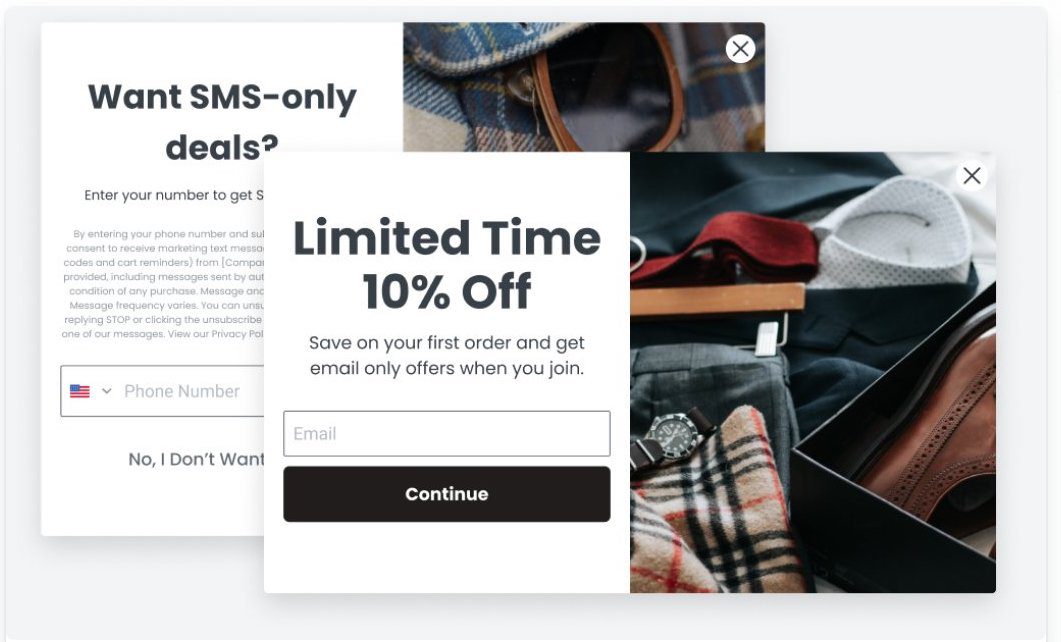
Once you’ve got a solid plan for execution, it’s time to launch!
6) Test, test, and test again
You’re not finished yet, though. In fact, you’ll never be ‘finished’ if you want to build a high-quality list.
No matter how much care and attention you put into every step above, you won’t have created the perfect popup.
And even if you did, the performance of different strategies varies over time. What was highly successful last year might not convert that well this year. Especially in a fast-paced industry like ecommerce.
The only way to keep your offer fresh and enticing is to continually optimize it. This means running a split test, then another split test, and another (you really should not stop testing).
But don’t just test things randomly. Approach your split tests in a methodical way by testing one element at a time and tracking the conversion rate closely. Test your offer, then your messaging, then your design, then your execution, and repeat.
Learning how to build an email list is just the beginning
A high-converting list can make or break your future email and SMS campaigns. But it’s also simply the foundation of your campaigns.
Following the strategies we’ve just covered, such as focusing on quality over quantity and being conscious of who’s signing up, will put you on the right path. What will bring in the actual sales are the campaigns you send to your list.
Now that you know how to build an email list, check out our blog for strategies on sending killer email and SMS campaigns.

